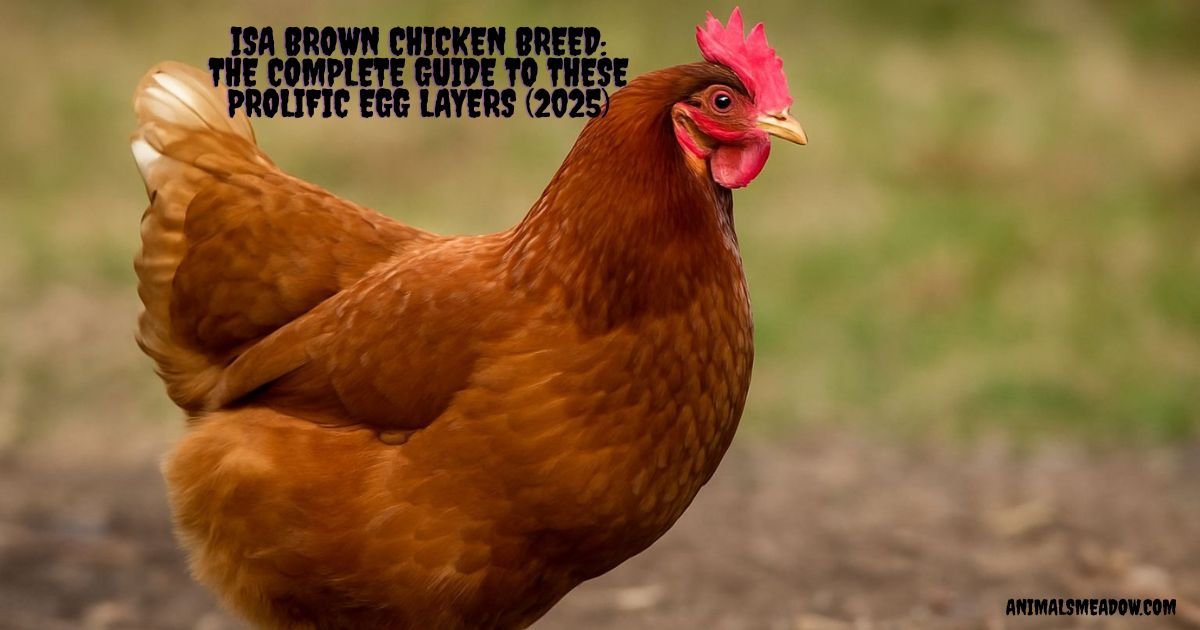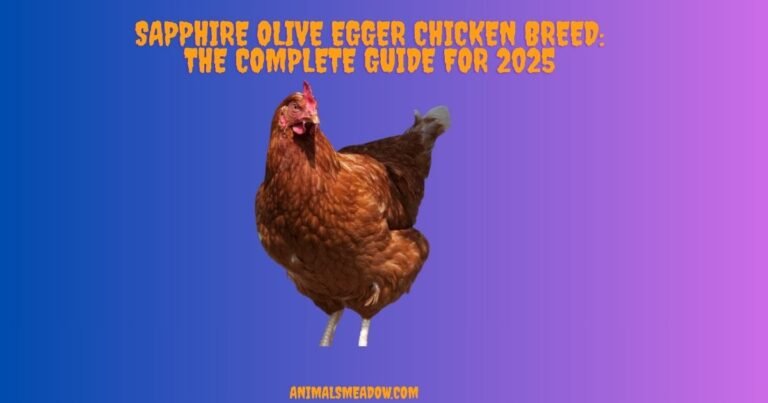ISA Brown Chicken Breed: The Complete Guide to These Prolific Egg Layers (2025)
Did you know that one ISA Brown hen is capable of laying more than 300 eggs a year? That is almost an egg each day!
The ISA Brown chicken breed is perhaps your dream match should you be planning to add some chickens to your backyard flock or engage in a small scale egg production business.
I have worked years with different breeds of chickens and I can assure you that the ISA Browns are always a reliable and performing breed. With or without experience, whether you are a total amateur or an expert at keeping chickens, knowledge about this fantastic breed will enable you to make well-informed choices about your flock!
ISA Brown Chicken Breed History
The ISA Brown chicken, developed in 1978 at the Institute de Selection Animal in France, represents a remarkable achievement in poultry breeding. Initially aimed at producing robust egg layers, this hybrid breed quickly garnered attention for its impressive productivity and adaptability to various environments.
Despite their success and popularity worldwide, ISA Browns have not been recognized by the American Poultry Association (APA), which limits their standing within the formal poultry community in the United States. This absence from formal recognition is intriguing when considering how these birds have consistently outperformed many standard breeds regarding egg production.
As consumers increasingly seek sustainable food sources, the ISA Brown’s efficiency may pave the way for discussions surrounding breed acceptance and adaptation within a rapidly evolving poultry industry landscape.
The future could see ISA Browns not just as significant players in egg laying capacity but also as symbols of innovation celebrating hybrid vigor’s potential in aviculture.
Are ISA Brown Chickens A Heritage or Hybrid Breed?
ISA Brown chickens are classified as a hybrid breed rather than a heritage breed. They were developed in the 1970s through selective breeding to optimize egg production, making them highly efficient layers.
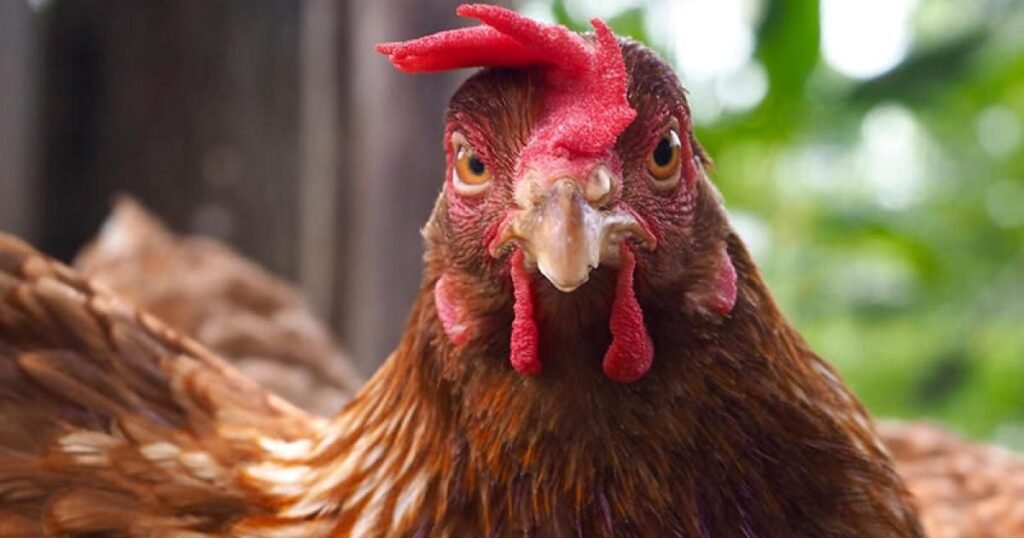
While they may have some ancestral ties to older breeds, their specific genetic makeup and breeding practices differentiate them from traditional heritage breeds, which are typically defined by their historical significance and ability to reproduce naturally.
The lack of acceptance into the American Poultry Association (APA) stems from their hybrid status and the proprietary nature of their parent stock. Unlike heritage breeds, which maintain distinct characteristics over generations and can be traced back to specific origins, ISA Browns are bred for performance traits rather than preserving a particular lineage.
This focus on productivity has made them popular among commercial egg producers but means they do not fit the criteria set for purebred recognition within organizations like the APA.
ISA Brown Chicken Breed Appearance
ISA Browns are a stunning embodiment of rustic charm, displaying a rich tapestry of shades from warm caramel to deep rust, making each chicken a unique work of art.
Their plumage glimmers in the sunlight, creating an inviting visual that captivates not just poultry enthusiasts but anyone drawn to nature’s beauty. Beyond their striking appearance, one cannot overlook their signature features; the bright red single comb stands proud atop their heads, exuding both elegance and vitality.
Equally impressive are the medium sized bright red wattles that dangle gracefully beneath their chins. These wattles not only add to their overall allure but also serve as indicators of health and fertility, their vibrancy often synonymous with a well cared for flock.
The characteristic demeanor of ISA Browns complements their looks; they possess friendly dispositions that make them delightful companions in any backyard setting. Every glance at these brown chickens can inspire a deeper appreciation for both aesthetics and practicality within poultry keeping.
How Much Do ISA Brown Chickens Weigh?
Roosters typically weigh around 5 to 6 pounds, while hens are slightly lighter at approximately 4 to 5 pounds. This places them in the average weight range for chickens, with roosters averaging close to the typical 6 pound mark and hens being just below the average hen weight of 5.7 pounds.
These birds are not only valued for their size but also for their adaptability and hardiness, making them suitable for various farming environments. Their manageable weight contributes to their overall health and productivity, allowing them to thrive in both free range and confined settings. Whether you’re raising ISA Browns for eggs or as pets, their consistent size makes them an appealing choice for many poultry enthusiasts.
Average ISA Brown Chicken Lifespan
ISA Brown chickens are celebrated for their prolific egg production, often laying upwards of 300 eggs annually. This remarkable output comes at a cost to their lifespan, particularly in backyard confinement where they typically live just 2 to 4 years.
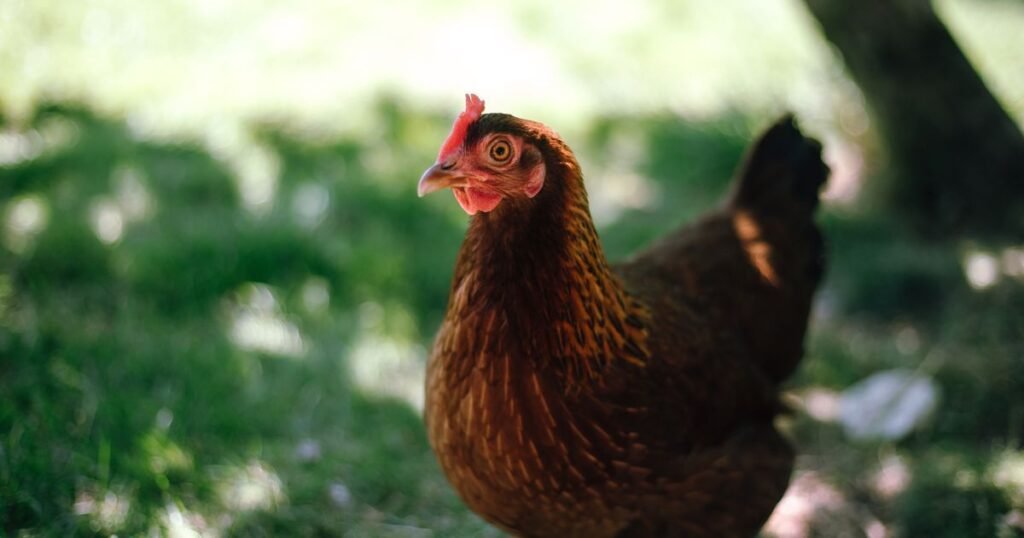
The intense reproductive demands placed on these birds can lead to health complications and accelerate the signs of aging. In less optimal conditions, like those commonly found in backyards with limited space and resources, ISA Browns may struggle to maintain their vitality.
In contrast, when provided with an ideal environment that includes ample space, proper nutrition, and regular healthcare, ISA Browns can thrive for up to 5 to 8 years. This longevity not only allows them more time in the coop but also enhances the quality of life for both the chicken and its caretaker.
It’s important for enthusiasts to strike a balance between maximizing egg production and ensuring that these gentle layers are not over stressed. Sustainable chicken keeping practices that prioritize well being could transform how we view productive breeds like ISA Browns positioning them as lifelong companions rather than merely egg machines.
ISA Brown Chicken Egg Color
ISA Brown eggs are a striking addition to any egg basket, characterized by their large, medium to dark brown hue. This appealing coloration is not just about aesthetics; it’s often associated with the richness and flavor that backyard farmers seek in their eggs.
Isa brown chicken eggs are very interesting. The vibrant brown shells arise from the hen’s genetics, linking visually stunning eggs with nutritional quality, a harmony that perfectly encapsulates the attractiveness of ISA Browns for urban homesteaders.
How Many Eggs Do ISA Brown Chickens Lay?
ISA Brown chickens are known for their impressive egg laying capabilities, typically starting at around 24 to 26 weeks of age. Once they begin laying, you can expect them to produce an average of about 6 large light brown eggs per week.
This consistent production makes them a popular choice for both small-scale and commercial egg farming.As with most chicken breeds, the egg production of ISA Browns does decline as they age.
On average, you can anticipate a decrease in production of about 10 to 15% per year after their peak laying years. Eventually, they will stop laying altogether, but during their prime years, these hens can be incredibly productive and reliable layers compared to other breeds like Leghorns or Golden Comets.
Breeding ISA Brown Chickens
When breeding ISA Brown chickens, it’s crucial to understand their unique genetics, especially since they are derived from hybrid stock. Although these birds are known for their prolific egg production and hardiness, relying solely on a pure bred rooster and hen may inadvertently lead to undesirable traits in the offspring.
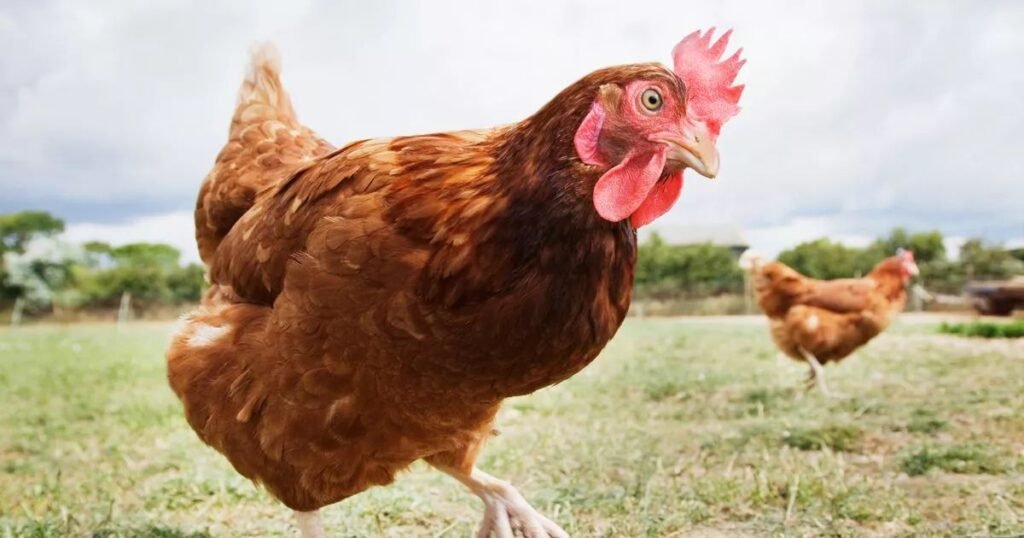
The ISA Brown lineage combines characteristics of both parent breeds, typically Rhode Island Reds and white leghorns, which means inconsistency can arise if breeders do not maintain genetic diversity within their flock.
Over time, breeding purebred ISA Browns can exacerbate health issues due to reduced genetic variability, leading to weakened immune systems in chicks or even an increase in inherited disorders.
Instead of producing uniformly robust offspring that reflect the best qualities of both parent breeds, farmers might find themselves with a range of health complications moving through generations.
Thus, while keeping the integrity of the breed is essential, introducing vigor through crossbreeding or careful selection strategies ensures healthier flocks capable of thriving under various conditions.
Prioritizing genetic diversification can encourage vitality and longevity in your poultry operation while celebrating the distinctive traits that make ISA Browns so beloved among chicken enthusiasts.
Related: Sapphire Splash Olive Egger
Are ISA Brown Chickens Broody?
ISA Brown chickens are primarily bred for their excellent egg production rather than their broodiness. These birds are known for their friendly temperament and high yield of brown eggs, making them popular among backyard poultry keepers.
While they generally do not exhibit strong broody behavior, certain factors such as environmental conditions or individual personality traits can encourage some ISA Browns to become broody.
In a nurturing environment with adequate nesting space and minimal disturbances, an ISA Brown may decide to sit on eggs and incubate them. If this occurs, they can be quite capable mothers, tending to their chicks with care. it’s important to note that this is not the norm for the breed;
Are ISA Brown Chickens Hardy?
Yes, ISA Brown chickens are indeed considered hardy birds, making them a popular choice for both beginner and experienced poultry keepers. Their adaptability allows them to thrive in various climates, whether it’s the chill of winter or the heat of summer.
They have a good tolerance for cold temperatures, but providing adequate shelter and bedding is essential during harsh winters to keep them comfortable and healthy.
In warmer weather, while ISA Browns can handle heat better than some other breeds, it’s crucial to ensure they have access to shade and plenty of fresh water.
This helps prevent overheating and keeps them stress free. Overall, their hardiness makes ISA Browns a versatile breed that can perform well in different environments with proper care and management.
Common ISA Brown Chicken Health Risks
The ISA Brown chicken, celebrated for its prolific egg laying capabilities, often faces health risks that can compromise its well being. One stark reality of their high production rates is the strain placed on their reproductive systems.
This stress can lead to a myriad of complications, including reproductive cancers and tumors, which underline the importance of vigilance among poultry keepers. Prolapses are another concern; these occur when the oviduct protrudes through the vent due to excessive egg laying pressure, necessitating prompt veterinary care.
To mitigate these health issues and promote robust production, nutrition plays a crucial role. Providing vitamins in their water can bolster immunity and enhance overall vitality in ISA Browns.
incorporating oyster shells into their diet offers vital calcium for strengthening eggshells, a preventive measure against breakages that not only maintains productivity but also supports bone health.
Proper management of these dietary factors is essential; it can make a significant difference in preventing some of the serious reproductive problems inherent with high output hens. By understanding and addressing these health challenges thoughtfully, backyard farmers can ensure healthier flocks while enjoying a steady supply of fresh eggs throughout the year.
Are ISA Brown Chicken Meat Birds?
ISA Brown chickens are primarily known for their exceptional egg laying capabilities rather than their meat production. While they do possess a decent amount of body mass, they are classified as dual purpose birds, which means they can provide both eggs and some meat. When compared to specialized meat breeds like Broilers, ISA Browns do not grow as quickly or produce as much meat.
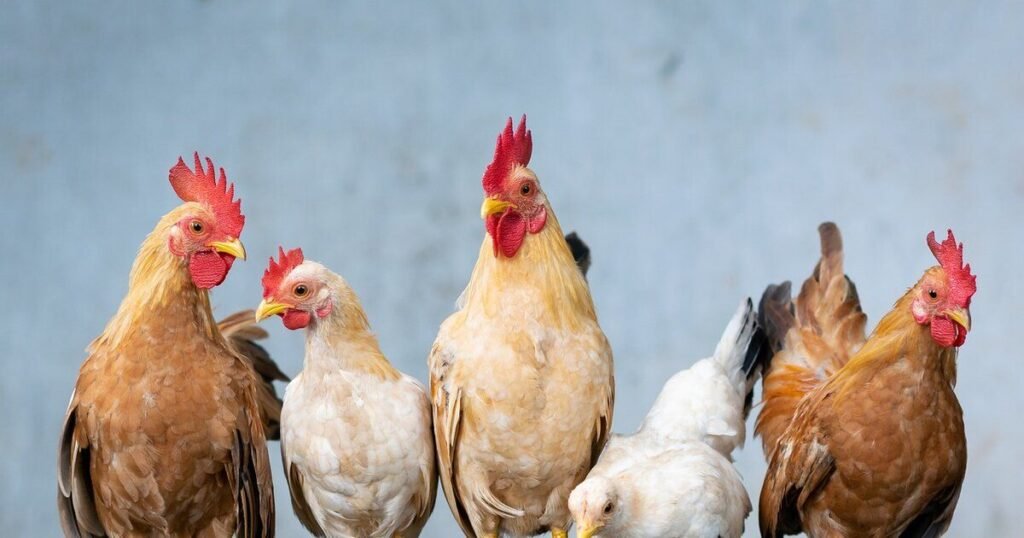
In terms of overall size and growth rate, ISA Browns are average sized chickens. They typically reach maturity at around 20 weeks but may not yield the same quantity of meat that dedicated meat breeds do.
If your primary goal is to raise chickens for substantial meat production, you might want to consider other breeds specifically bred for that purpose. If you’re looking for a reliable layer with the bonus of some extra meat on the side, ISA Browns can be a suitable choice.
Are ISA Brown Chickens Noisy?
ISA Brown chickens are generally regarded as a quieter breed compared to many other chicken varieties. They are known for their calm demeanor and tend to be less vocal, making them a suitable choice for backyard flocks, especially in urban or suburban settings where noise can be a concern.
Their soft clucking is typically less disruptive than the loud crows of roosters or the more boisterous calls of breeds like Barred Rocks.
It’s important to note that while hens are relatively quiet, roosters can be quite noisy. If you’re considering keeping ISA Browns primarily for egg production, it’s best to stick with hens, as they will provide you with eggs without the added noise of crowing.
Overall, if you’re looking for a peaceful addition to your flock that won’t disturb your neighbors too much, ISA Browns are an excellent option.
ISA Brown Chicken Breed Temperament
ISA Brown chickens stand out not only for their prolific egg laying but also for their friendly and docile nature, making them a favorite among families. These birds thrive in a social environment and readily adapt to the hustle and bustle of household life.
Children find them enchanting companions, as these affectionate hens often seek out human interaction, enjoying the warmth of a gentle cuddle or a pat on the head.
When it comes to roosters, ISA Browns maintain a relatively calm demeanor when properly managed. Keeping one rooster for every twelve hens helps to ensure harmony within the flock while minimizing aggressive behavior commonly associated with other breeds.
This thoughtful approach fosters a peaceful atmosphere that allows both kids and adults to interact freely with their feathered friends without fear or discomfort. With their nurturing temperament and ease around humans, ISA Brown chickens can truly become cherished members of any family.
ISA Brown Chicken Housing Requirements
Creating the perfect habitat for your ISA Brown chickens goes beyond just providing shelter; it’s about ensuring their overall well being. These resilient birds thrive best in a spacious environment, which means prioritizing four square feet of coop space per bird is essential.
it’s not just about numbers; the height matters too! A well ventilated, taller coop allows for more comfort and encourages natural behaviors like flapping and stretching their wings.
When it comes to outdoor runs, allocating 8 to 10 square feet per bird can make all the difference in creating a stimulating environment that promotes social interactions and exploration.
During heat waves, as temperatures soar past 90 degrees, having a roofed run equipped with excellent airflow becomes crucial. Providing them direct access to a shaded coop offers much needed relief from the scorching sun while still allowing them to enjoy outdoor experiences safely.
Innovative management strategies can further enhance their living conditions. For instance, incorporating natural elements like bushes or small trees within the run not only gives shade but also provides stimulation through scratching and pecking at fallen leaves or insects.
By crafting enriching environments that respect both their comfort and instinctual behaviors, you nurture more than healthy ISA Browns. You cultivate happy companions who reward you with delightful eggs and spirited personalities!
Are ISA Brown Chickens Right For You?
ISA Brown chickens can be an excellent choice for beginners and those looking to keep a reliable egg laying flock. Known for their friendly and docile nature, these birds are easy to handle, making them ideal for families or individuals new to chicken keeping.
They thrive in various climates, showcasing impressive cold tolerance, which allows them to adapt well to different environments without compromising their health or productivity.
In terms of egg production, ISA Browns are among the top layers, often producing over 300 eggs per year once they reach maturity. This prolific output makes them a great option if your primary goal is to have a steady supply of fresh eggs.
It’s important to note that while they are primarily bred for egg production, they can also be raised for meat; just keep in mind that they may not grow as quickly or yield as much meat compared to dedicated broiler breeds.
Overall, if you’re looking for a dual purpose bird with excellent laying capabilities and a gentle disposition, ISA Browns could be the right fit for you.
Conclusion
The ISA Brown chicken breed is a great option when one wants to have reliable, large scale egg production with a calm and easy to handle temperament.
These wonderful birds have gained a reputation of being one of the most productive laying hen in the world, and continue getting more than 300 eggs in a year without losing their friendly nature.
Isa Browns are the best combination of productive, easy to keep and economical, whether you are beginning with your first backyard flock or adding to an existing business.
You are about to feel the pleasure of fresh eggs every day.
FAQs
What are the disadvantages of ISA Brown chickens?
ISA Brown chickens, while renowned for their prolific egg laying capabilities, do come with several disadvantages that potential poultry keepers should consider. One of the most significant drawbacks is their relatively short lifespan, typically ranging from two to three years.
How many eggs do ISA Browns lay?
ISA Browns are known for their impressive egg-laying capabilities, typically producing between 300 to 350 eggs per year. These hens are bred specifically for high productivity, making them a popular choice among both commercial and backyard poultry keepers.
Do ISA Browns breed true?
ISA Browns are indeed a hybrid breed, specifically developed for egg production. They are a cross between different strains of chickens, which is why they do not breed true.
What are ISA Brown chickens good for?
ISA Brown chickens are primarily known for their prolific egg-laying capabilities, making them an excellent choice for both small-scale and commercial egg production. With the ability to produce up to 500 high-quality eggs per year, these hens are particularly valued by backyard poultry keepers and farmers alike.

